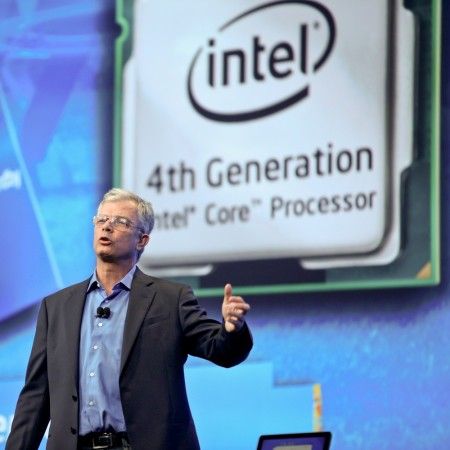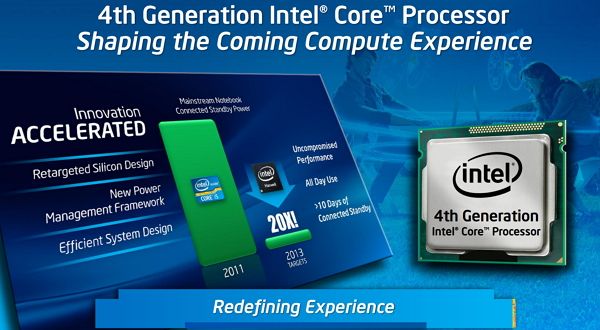HD 3000 in Intel’s second generation Core ‘Sandy Bridge’ processor was a pretty big step forward for integrated graphics — it adds significant gaming capabilities to thin, light, and efficient Ultrabooks, without the need for discrete graphics. HD 4000, introduced with the third and current-gen Core ‘Ivy Bridge’ processor took things one step further by doubling the performance over Sandy Bridge. With the fourth and next-gen Core ‘Haswell’ processor, slated to launch in Ultrabooks and other systems in 2013, Intel is once again doubling performance over the previous generation.
We’re happy to see Intel keep this pace. HD 3000 set a great benchmark but Intel isn’t resting on their laurels. The new graphics in Haswell will likely be called HD 5000, and they are getting a 2x boost in performance over Ivy Bridge and HD 4000. The great thing about doubling the performance of Haswell graphics over Ivy Bridge is that an HD 5000 Ultrabook can achieve the same performance of HD 4000 Ultrabook at half the power. So not only will you be able to push the graphics of a Haswell-based Ultrabook beyond what an Ivy Bridge Ultrabook can do, you’ll also be able to get the same level of performance with great efficiency in scenarios where battery life is important.
At IDF this week Intel pitted a current-gen Ivy Bridge Ultrabook against a next-gen Haswell prototype each running a the same graphics benchmark. Stutters on HD 4000 are smooth as butter on HD 4000:
In addition to improvements in graphics, Intel says that Haswell is going to reduce idle power consumption by a whopping 20x over Sandy Bridge opening the door for always-on Ultrabooks.













That’s genuinely impressive. Any estimates on what quarter of 2013 we’ll see the first Haswell ultrabooks from the leading brands?
Q2/Q3.
Makes you wonder if there will be any need for the Atom processor when Haswell arrives.
I’m hoping for Haswell powered 10″ notebooks next year. Whatever next year’s Valley View Atom platform has to offer can’t be close to Haswell. At least I don’t think Intel will knowingly have them overlap.
I’m curious. So where does the Haswell processor stack up when compared to today’s selection of discrete GPU’s for laptops? Is it just as good as the midrange ones that we’re seeing being offered for current ultrabooks?
If so, then perhaps I wouldnt have to worry about getting an ultrabook with a discrete GPU when Haswell comes out. The HD4000 is nice, but still not up to par with discrete GPU’s.
Typo in second last paragraph?
2x is nice but what happened to the 4x – 5x GPU performance at the same TDP, are those versions still coming?
I don’t think you’ll be seeing that much more of a performance difference at the same TDP but the architecture is a bit scalable, the number of active execution cores can be changed with three tiers of GT1, GT2, or GT3 processor graphics.
They are likely using the lowest tier configuration for this demonstration as they’re planning to push out a 10W TDP version before the higher TDP units and would be best to show the low power usage.
So higher versions will be coming but it remains to be seen how much the performance will differ, especially if scaled for the same power usage.
Actually they are aiming the highest GT3 SKUs to have the most perf/power efficient chip. The GT3 clocks substantially less than GT2, so while it outperforms the GT2, it uses less power.
I hope this won’t be that expensive but the haswell shows some promise for builders everywhere, Max Pc first imformed me about this and this stuff is seriously in range.
I would like to see graphics benchmarks and tocks over hd 5000 and ivy bridge